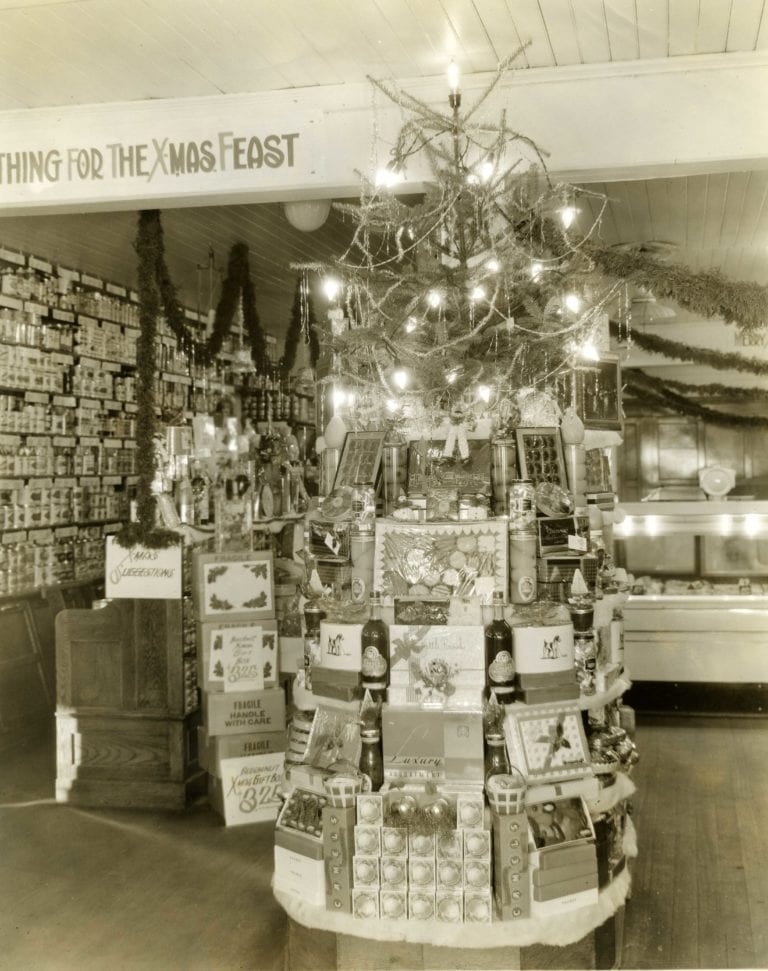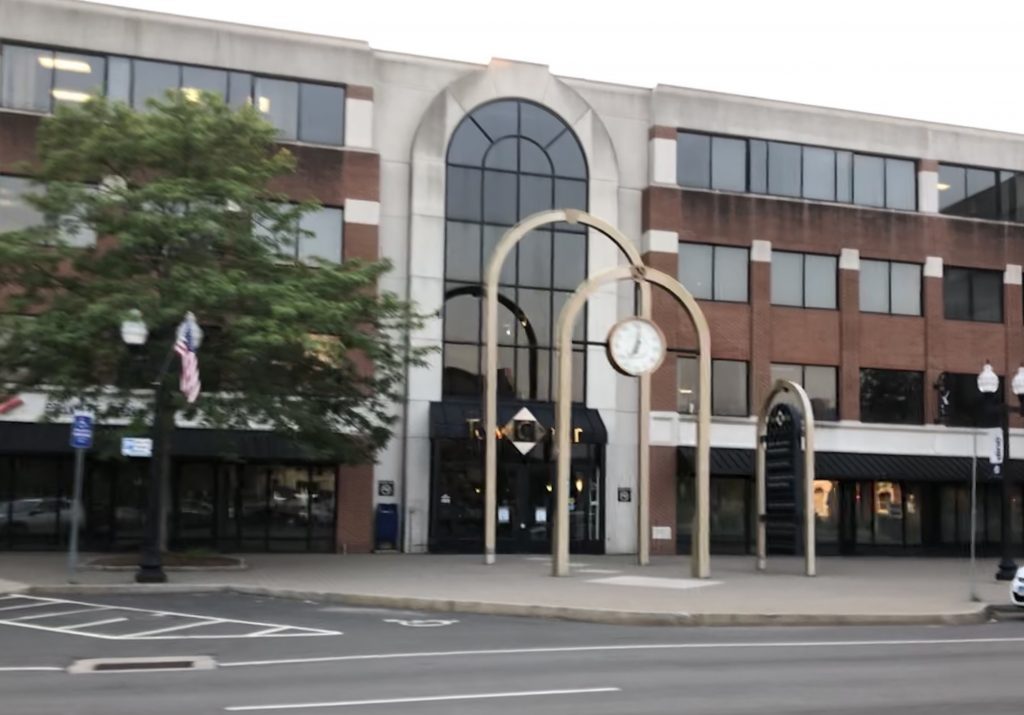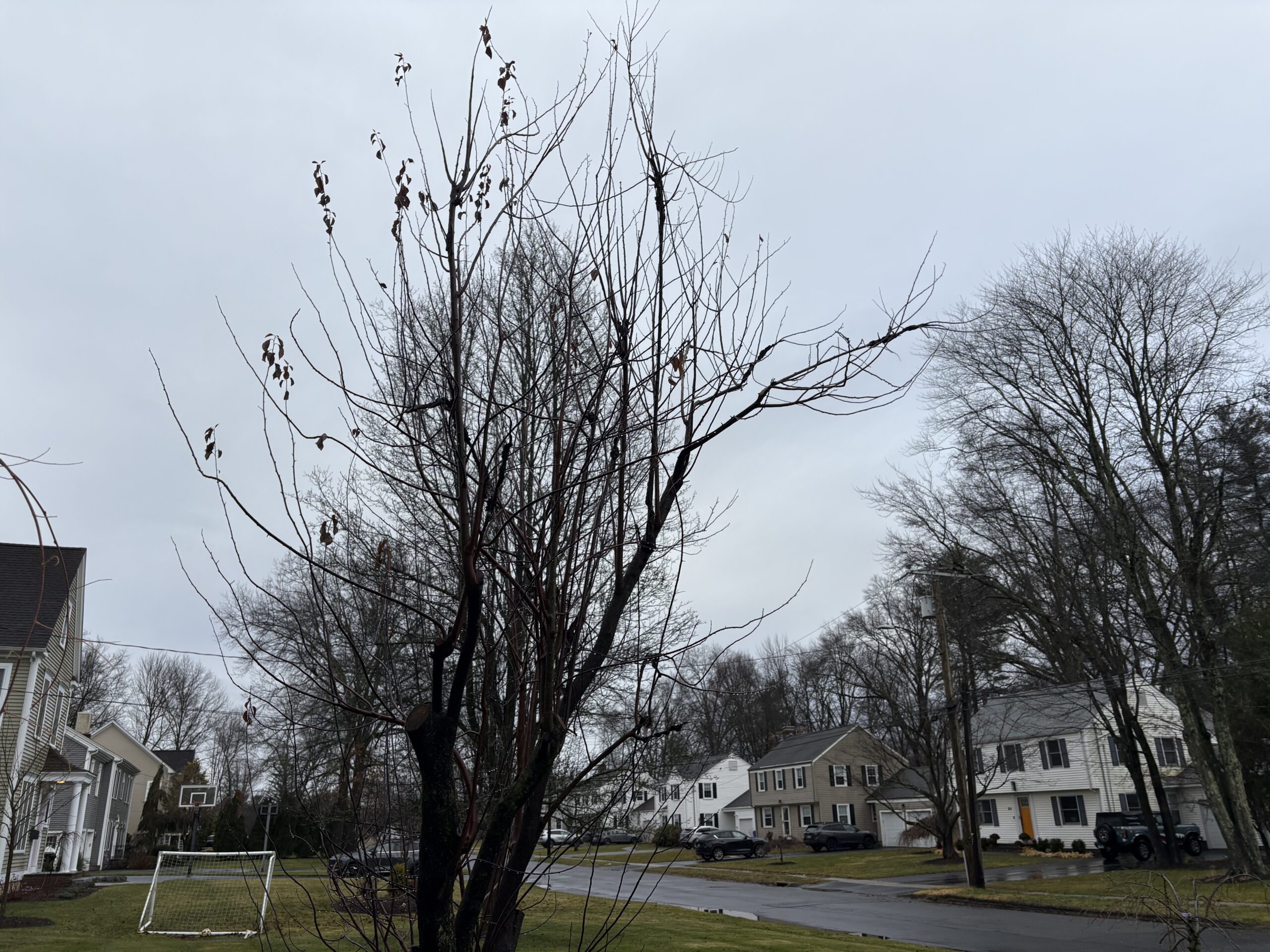From the West Hartford Archives: M. J. Burnham’s Holiday Display

Audio By Carbonatix

M.J. Burnham's on South Main Street in 1932. Photo courtesy of Noah Webster House & West Hartford Historical Society
Historian Jeff Murray takes a look into West Hartford’s past to uncover some surprising information, stir up some memories, or reflect on how much life has changed – or hasn’t changed at all. Enjoy this week’s ‘From West Hartford’s Archives’ …
By Jeff Murray
This is a photograph of a Christmas display at Myron J. Burnham’s grocery store on South Main Street in 1932.
Myron J. Burnham was enlisted by his father-in-law, a Hartford grocer, to help manage a branch store in West Hartford. He was told continually that he could never become the manager of a large store (and that Burnham’s was destined for failure), but he bought out the store from his father-in-law in 1898 with only $500, two employees, and two horse teams at just the right time.
By capitalizing on the neighborhood’s growth and the new trolley line along Farmington Avenue, Burnham transformed the modest store into a huge business. Over the next several decades, he added departments, acquired neighboring properties and built multiple additions, and grew it into a modern grocery store (for the time) with 50 employees.
In 1932, Burnham’s store was still doing quite well, even in the middle of the Great Depression. During this holiday season, Burnham’s delivered hundreds of Christmas packages, specially ordered in the weeks leading up to the 25th. One of the writers of the Hartford Courant wrote on Dec. 18, 1932: “The other day, we saw a fine assortment of delicious-looking Christmas candies that were most attractively boxed. … They also have a large selection of delightful-looking novelties for children.”
The store offered specials throughout the last week before Christmas, with a gallon of sweet cider for 25 cents and a package of peas, applesauce, beets, tomatoes, beans, and corn for less than $1.50.
This photo of the holiday display can show us a snapshot at a near height of the Great Depression. The tiered stand in the center features a modest tree with simple lights and light ornaments and tinsel. Burnham’s positioned itself as a one-stop shop for holiday meal essentials and small luxuries.
At the end of 1932, families had much less disposable income than they did in the 1920s, so spending would have remained limited. The packaging style also reflects the times – no elaborate logos, flashy fonts, or bright colors that became more common by the end of World War II. Minimal packaging (boxes, bottles, and tins) without any glamor was typical of the 1930s.
One of the things that separated Burnham’s from larger supermarkets to come was the sense of intimacy inside the store. Burnham’s was the center of life in West Hartford (it was the prime spot for news, food, and meetings out front). The interior was cozy and familiar to anyone stopping in. The sign that reads “Xmas Suggestions” is a perfect reminder of the bond between stores like this and the community.
By the mid-20th century, however, M. J. Burnham’s confronted mounting competition from larger supermarkets. Newer chains, like First National, A&P, and other emerging giants, were able to offer greater variety, lower prices through bulk purchasing, and more modern shopping experiences, especially to a population that demanded it after World War II. Supermarkets could leverage scale to their advantage – they could negotiate directly with food manufacturers and suppliers at a regional or even national level. Customers were drawn by not just convenience, but highly aggressive marketing campaigns, loyalty programs, and inventory turnover that Burnham’s just couldn’t keep up with.
Some might think that larger supermarkets lost their personal displays, but what they lacked in intimacy, they more than made up for in scale. After World War II, stores like First National offered a huge variety for Christmas gifts, including hosiery, and frozen foods (“First Aid for Tired Christmas Shoppers”). Even better, their selection for toys was immense – just their collection of dolls featured state troopers (complete with pistol and helmet), cowboys, and “little mothers.”How can you compete with 55 cent lamb legs next to toy soldiers?
In 1958, after years of declining profits, Burnham’s store was sold and ultimately demolished to make way for a parking lot for the adjacent First National.
Small-time stores like Burnham’s may have been casualties of the consumerism of the 1950s, but they had their place in West Hartford’s history. This holiday display is a great reminder of that.

The Town Center Building, with an addresss of 29 South Main St., encompasses the property that was formerly the location of M.J. Burnham’s. Photo credit: Ronni Newton (we-ha.com file photo)
Jeff Murray was born and raised in West Hartford and has been involved with the Noah Webster House & West Hartford Historical Society since 2011 when he was a high school student and won the Meyer Prize for his essay on local history. Jeff routinely volunteers as local history researcher uncovering information for numerous museum programs such as the West Hartford House Tour and West Hartford Hauntings. Jeff works as a data analyst at Pratt & Whitney.
Like what you see here? Click here to subscribe to We-Ha’s newsletter so you’ll always be in the know about what’s happening in West Hartford! Click the blue button below to become a supporter of We-Ha.com and our efforts to continue producing quality journalism.



